Times have changed, and the focus in the Health industry has shifted towards patients and their engagement.
What is patient engagement?
Patient engagement in healthcare refers to the involvement of patients in their own care and decision-making processes. This is crucial because you might be surprised, as everyone talks about patients being at the forefront. But in reality, a significant number of people don’t complete the entire app journey during the onboarding process, even though they might have initially engaged with the application. After interacting with a doctor, they simply forget about the app.
And this doesn’t just apply to telemedicine apps that aggregate services from various doctors. It includes apps created by medical professionals for performing specialized exercises for the lower back, breathing, and more, or even just sessions with doctors/coaches.
Even in such cases, patients might forget to perform exercises and eventually “give up” on them. All of this is attributed to poor Patient Engagement in healthcare.
What are the Benefits of Patient Engagement in Healthcare? Patient Engagement is indeed the primary factor by which people decide to switch service providers or medical plans.
For instance, 41% of patients stop using an app due to poor engagement, and 38% cite lack of personalization and patient understanding as reasons to consider switching apps and services.
So, how to increase patient engagement? To achieve that, all you need to do is follow these 5 simple patient engagement strategies
By the way, if you want to learn about other aspects of digital health development, check out our list of 100 resources for digital health startups and companies. It includes books, guides, websites, and influencers covering Product Management, UX, Technology, Healthcare market trends, and Product Marketing.
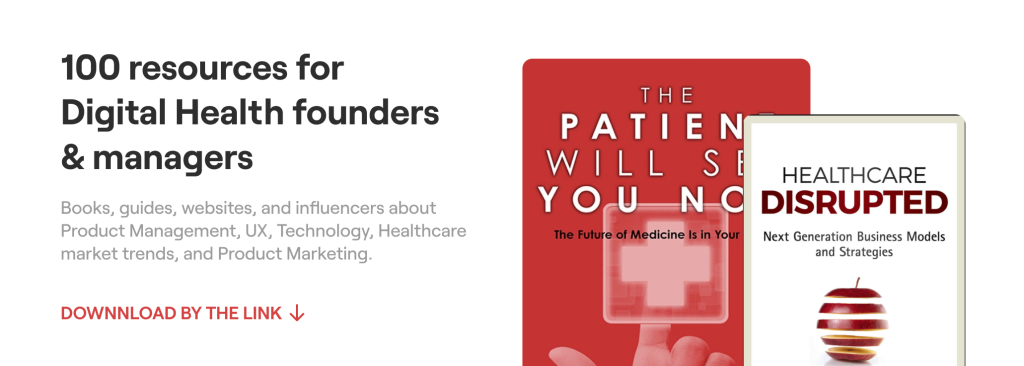
Download List of 100 resources for digital health startup founders & managers
I. Start engaging before the encounter with the patient
1. Automate the basics: for instance, if a majority of consultants (if available) in the app are booked, the patient might not know whom to schedule an appointment with based on their symptoms.
That’s why good apps use a questionnaire or even a symptom checker feature before scheduling an appointment with a doctor.
Example: a patient receives an automated text message prior to their appointment with a link to a questionnaire. This form collects information about their medical history, allergies, and current medications.
This proactive step saves time during the actual appointment and ensures that the medical team is well-prepared to address the patient’s needs.
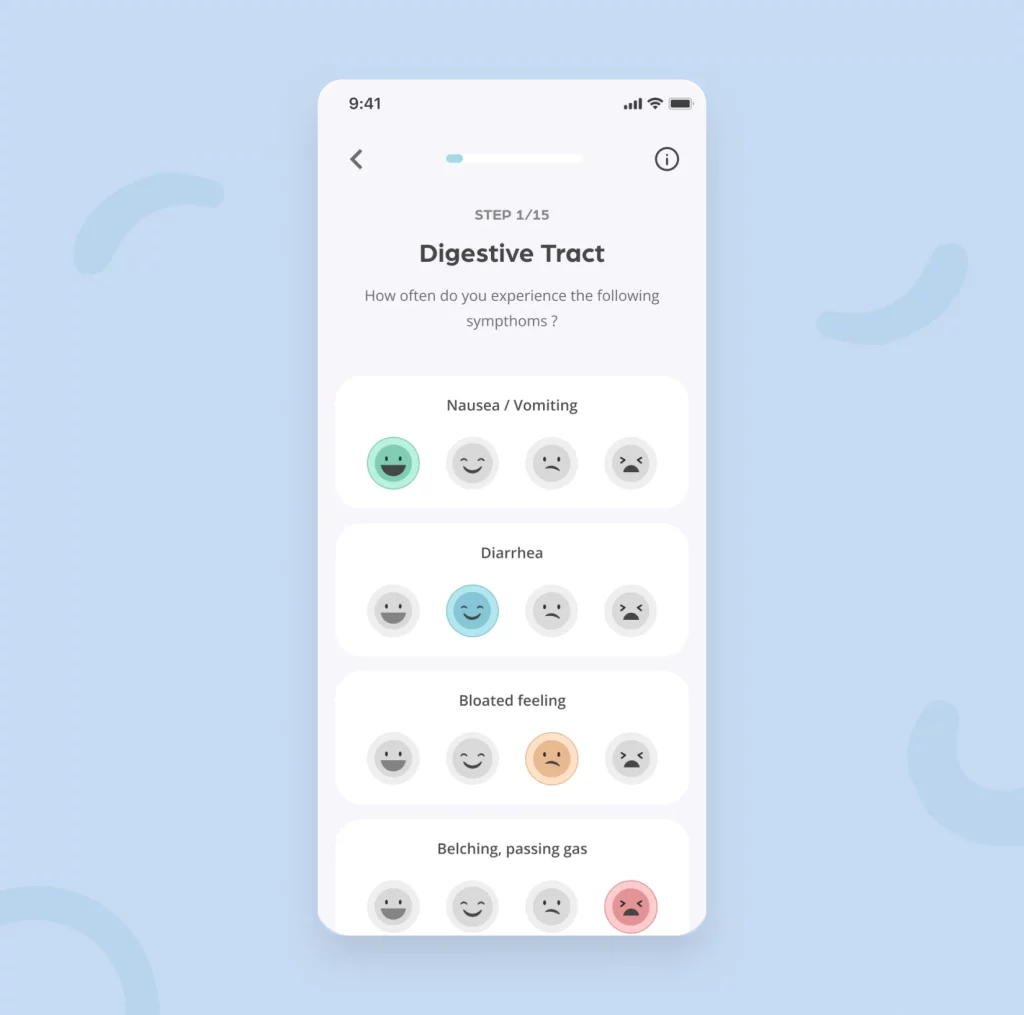
2. Guide the patient from start to finish: a potential patient might not understand where or how to schedule an appointment, or worse, they might begin to distrust you.
This problem is resolved through proper onboarding, which includes: social proof, absence of jargon, accessibility for various demographics, and the presence of incentives.
As examples of the latter, you can show features like a diary, a calendar of achievements, or even gamification during onboarding (we’ll discuss gamification in point 4).
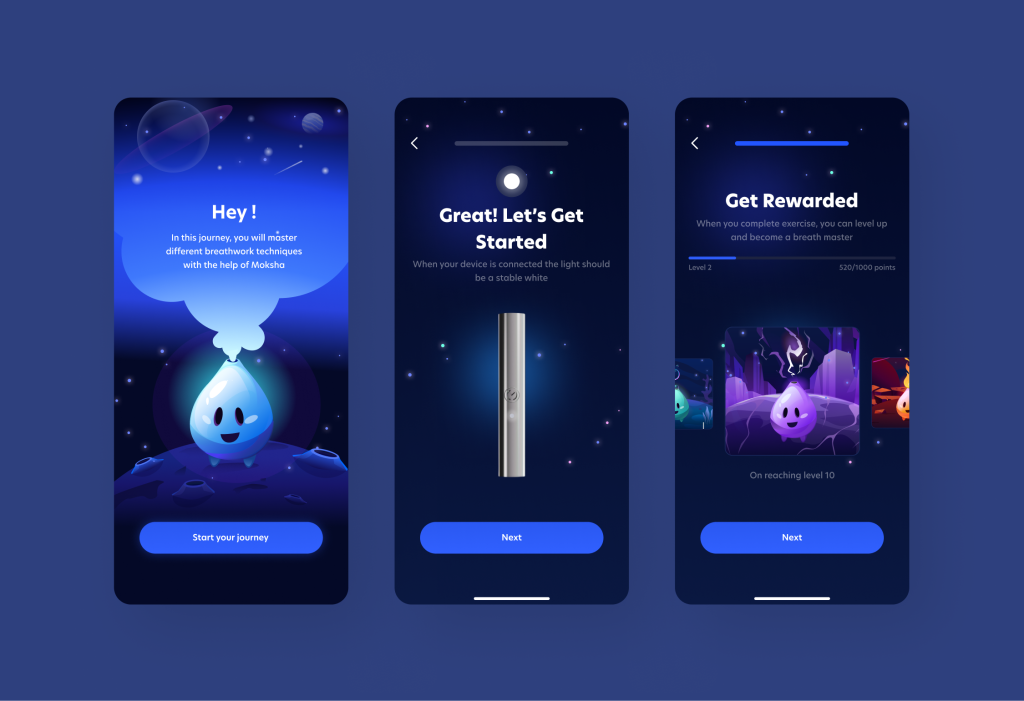
We’ve delved deeper into all aspects of onboarding in the article linked below. We’ve also gathered over 20 top onboarding examples in the Digital Health industry.
And if you want to delve a bit deeper into this topic, we’ve also created a comprehensive guide on how to boost user engagement:
1. Our best UI/UX practices to make an app not just used but loved
2. Product strategies to drive retention and engagement
3. Our best Engineering practices to build scalable solutions
4. Tips to ensure compliance with healthcare regulations
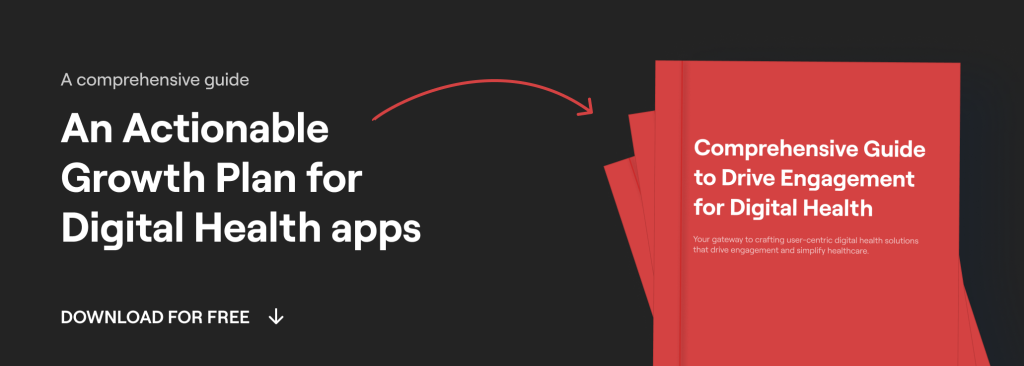
Download Free Actionable Insights to Grow your Digital Health app
It was the first of the patient engagement strategies. After we’ve gathered basic patient information and guided them through the onboarding process, the next step is to create a personalized experience for them.
II. Segment patients and personalize their experience
Consider the range of people your app is intended for and the many use cases you may develop for each.
1. Demographics & medical history
Common demographic data includes biological sex, age, and sometimes even ethnic background.
With such information, you can create tailored personalized messages before a direct consultation or even match the patient with a suitable doctor for communication.
This approach fosters a sense of significance for the patient and can help elevate engagement levels.
Description of the condition: this entails the symptoms identified through patient questionnaires or symptom checkers. However, this isn’t about doctor-patient communication apps, but rather about specialized automated apps (for instance, for therapeutic exercises).
Depending on patients’ ages, illnesses, and fitness levels, there might be subdivisions within the patient group.
For young, healthy individuals, personalized training schedules and dietary advice could be offered to help them achieve their goals. For older patients, emphasis might be on fall prevention and mobility exercises.
For example, when we developed the Longevity app for Sumu (a Swiss company that helps people increase longevity through personalized coaching), we provided extensive options for personalized nutrition and exercise goals.
Furthermore, the initial personalization was based on DNA tests, making patient engagement and experience in healthcare particularly profound.
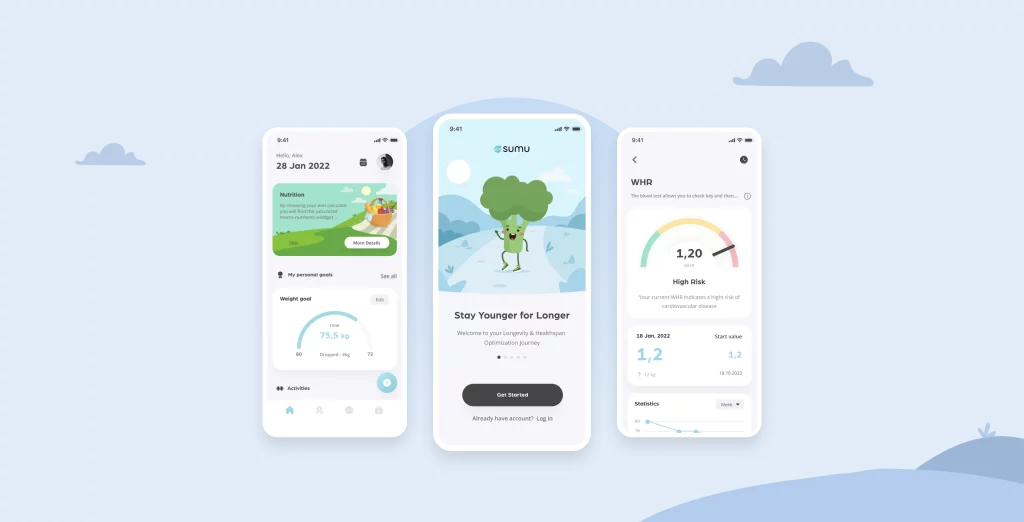
Learn how we created a mobile app with bio-marker analysis & coaches
2. Segments can also be divided using a unique interface tailored to each user group (B2C, B2B)
For instance, we created various user interfaces for students, psychologists, and schools in the Allbry app. 10,000 students have used this practical app, with over 100 contracts with Swedish schools.
Both segments of the target audience are interested in using the application daily (every day) due to the value of understanding and obvious segmentation.
Students can see chats and appointments.
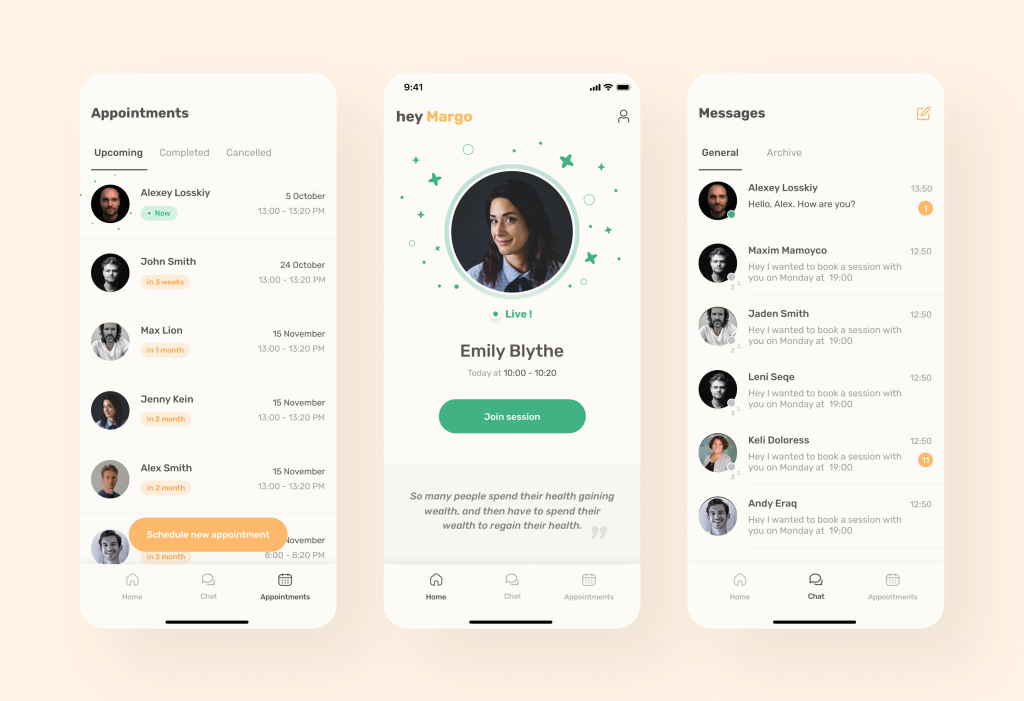
And schools and psychologists can see general and particular statistics on student success.
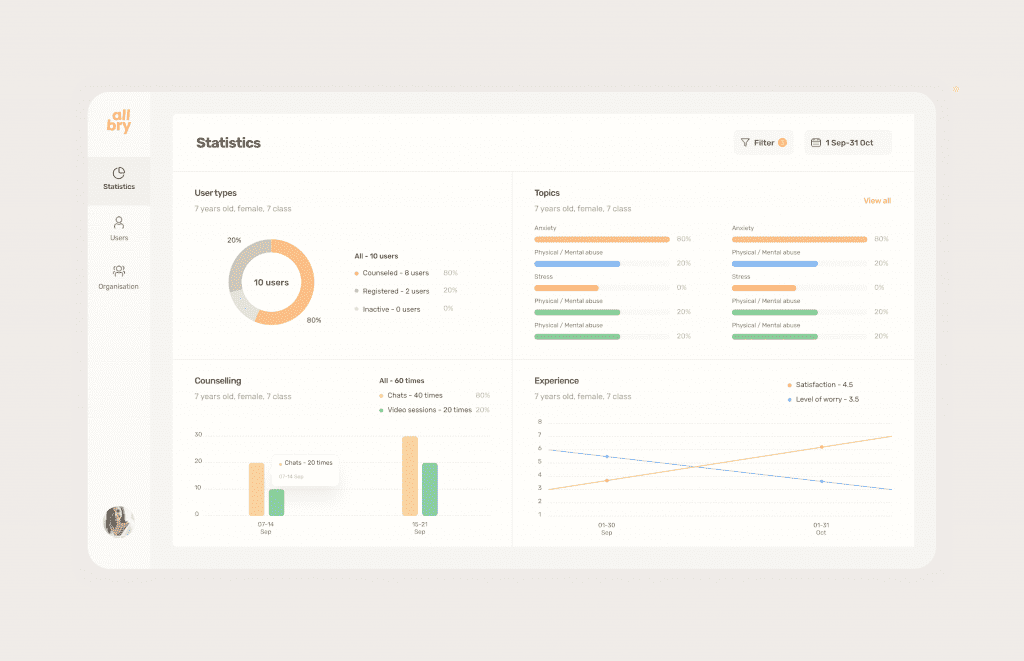
Learn how we’ve built telemedicine mental health platform for Swedish startup
Prepared to work with the patient? Now it’s time to get to know them 🙂
III. First introduction: practice shared decision-making
Shared decision-making contradicts conventional healthcare practices, but offers more opportunities for patient engagement and better health outcomes.
Traditionally, patients seek assistance so that medical specialists can leverage their knowledge, training, and experience to determine what’s wrong and how to fix it. This is because it’s assumed that patients lack adequate education.
Shared decision-making changes this narrative, democratizing healthcare. Instead of a dictatorship where the doctor makes all decisions, shared decision-making puts the patient on par with the doctor. They collaborate to make decisions about necessary tests, treatment options, and final patient care plans.
Shared decision-making demands more time as it involves significant patient education investments. Nevertheless, involving the patient in their own medical care enhances patient engagement in healthcare and significantly boosts satisfaction.
Remember, you should provide choices: different patient types are more inclined towards a true partnership in their treatment, with collective health goals, while other segments prefer more directive guidance.
The degree of shared decision-making should be tailored to each patient.
Here, besides telemedicine apps, specialized apps can be cited as examples. For instance, for the Swiss brand Incorpo Studio, we created an app that offers personalized spine exercises with professional guidance.
Patients can discuss their spinal exercise program separately with a specialist and find the most suitable option for them.
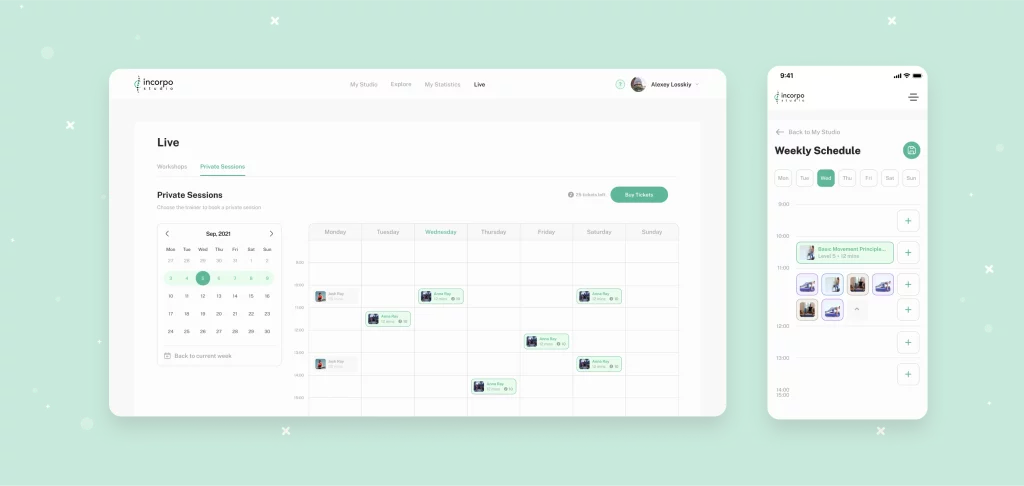
Learn how we’ve built health platform for physical wellbeing
Now, the most challenging part is ensuring that the patient doesn’t forget about their treatment. The next point show how patient engagement affects health outcomes.
IV. Treatment: about importance of involving patients in their care
This point reveals the importance of involving patients in their care. When a car isn’t working, a mechanic diagnoses the issue and then fixes it. Unfortunately, this same mindset has been adopted by many clinicians. They believe their job is to diagnose patients, create a treatment plan, and then move on to the next patient.
While undoubtedly an effective approach to healthcare, it perpetuates the stigma around medicine as cold and detached and acts as a barrier to achieving high-quality medical care.
This approach categorizes patients by the state of their health rather than holistically, as individuals with different motivations, priorities, and needs.
How can patient participation be enhanced to improve health outcomes along their healthcare journey? Let’s share the opinion of Manuel Cossio, Medical Geneticist and AI Engineer, Expert Advisor of ISPOR Digital Health and DiME:
1. Health literacy: empowering patients to comprehend their health condition and the steps toward improved well-being remains integral to their care. Recognized globally as health literacy, it illuminates that patients embracing these insights actively participate in their treatment and take proactive strides.
A prime example, HealthTap, fosters virtual connections between patients and healthcare providers, delivering responses through chat or video calls. The platform champions lucid, uncomplicated communication to provide emotional support, especially assisting those transitioning from conventional healthcare or alternative applications. Intriguingly, patients who engage with more inquiries often witness enhanced treatment outcomes.
Furthermore, the platform orchestrates reminders for follow-ups or lifestyle adjustments, significantly aiding patients in maintaining commitment to their treatment regimen. This underscores that patient involvement encompasses not solely their actions but also the platform’s supportive and engaging approach.
2. Motivation for your users: additionally, establishing explicit, attainable therapeutic milestones within the platform stands as another pivotal aspect of patient engagement. These benchmarks play a substantial role as they seamlessly integrate into gamified systems, elevating overall engagement.
For instance, achieving a consistent week-long fruit intake goal signifies a therapeutic breakthrough, earning patients recognition through badges. These badges serve as positive reinforcements, driving patients to pursue additional achievements and sustain their daily fruit intake.
That’s where the concept of progress and reward systems comes into play.
The first element: it’s the journey itself. You should allow the patient to accumulate visible progress. And as childish as it may sound (not all adults enjoy games), we’re not talking about turning the app into a game.
We’re referring to the idea that a user wouldn’t want to give up their accumulated progress, which can be lost. They’ve invested a lot of time and can see all the efforts put in to achieve a high level/rank, and they might even compare themselves to other users (which undoubtedly fills the patient with pride).
And if you add the ability to customize an avatar, it becomes easier for the user to identify with a character whose level is growing within the app.
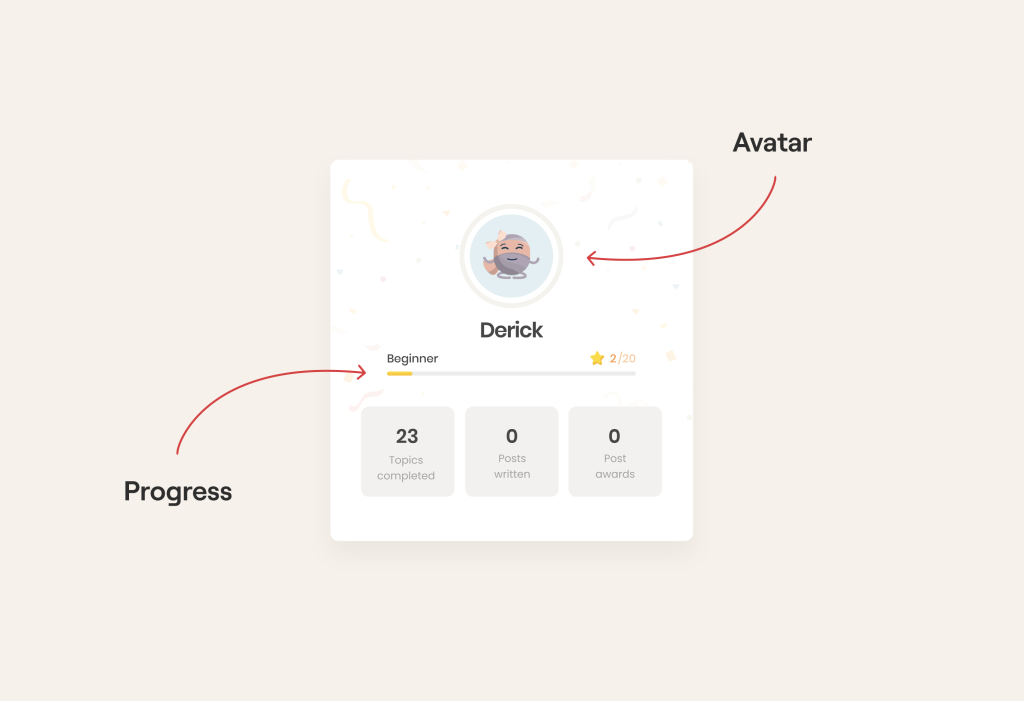
In this scenario, having the stick of level decrease, the user will psychologically find it harder to not follow the prescribed treatments related to their health.
The second element: these are additional rewards tied to progress.
Let’s delve into the intricacies of the reward system depicted in the image below:
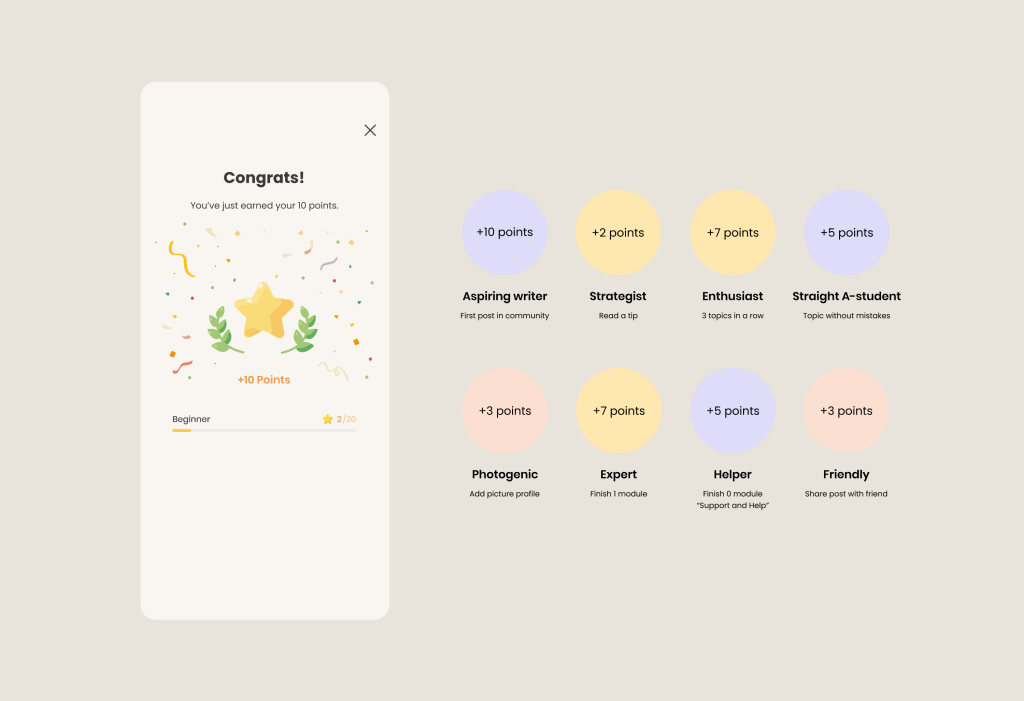
Incorporated here is a sophisticated system that incentivizes users to enhance their progress. It’s a concept reminiscent of how avid gamers often replay games to unlock “achievements.”
The key lies in the fact that to make progress and earn these “achievements,” users need to engage with the product more frequently. This reiterates that incorporating such a system is an essential factor for boosting the retention rate and influencing revenue-related metrics like LTV (Lifetime Value) and ARPPU (Average Revenue Per Paying User).
But these aren’t all the possible gamification elements that you can employ in your app. Below, we’ve written a comprehensive article about gamified mechanics in digital health apps.
3 Main Components of Gamification to engage users in Health Apps
3. Social moment: moreover, fostering a user community to share these accomplishments fosters a unified approach toward therapeutic objectives. A social interface within the app amalgamates individual efforts, cultivating heightened treatment adherence across the community.
These collective communities not only fortify therapeutic goals but also serve as bastions against the social isolation prevalent in certain health conditions. For instance, patients adhering to specific diets might limit social interactions to ward off temptations.
Engaging with like-minded individuals confronting similar challenges within these communities extends invaluable support and understanding, not just nurturing therapeutic endeavors but also mitigating social isolation.
Another example: the ProgressMe app (an app that aids young individuals dealing with eating disorders), where the Nozomi team added features like creating polls and content, including comment sections for discussion.
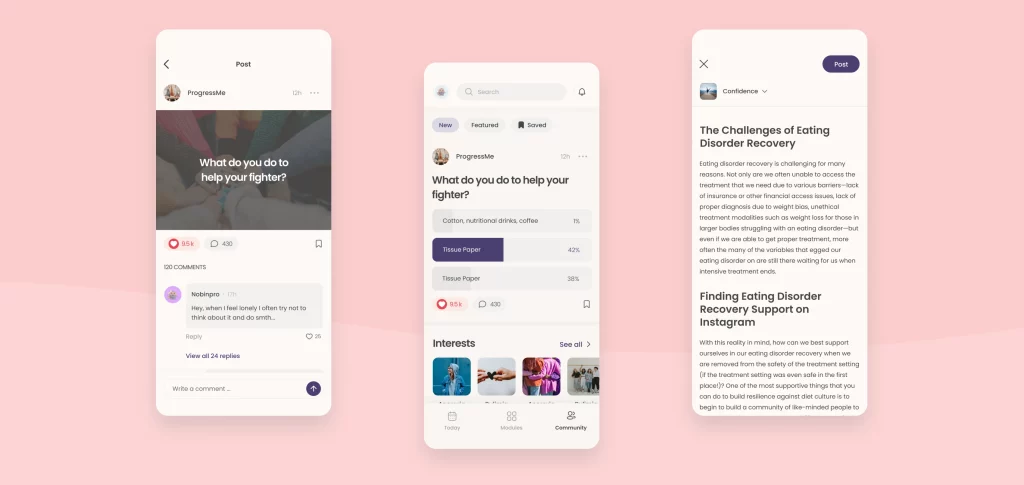
Learn how we’ve built platform for eating disorder treatment
4. And make sure that patients do not forget: Moreover, even after appointments, reminders (push notifications) are essential. For example, you can conduct specific daily sessions with the patient, but even in such cases, it’s important to notify users, just to be on the safe side.
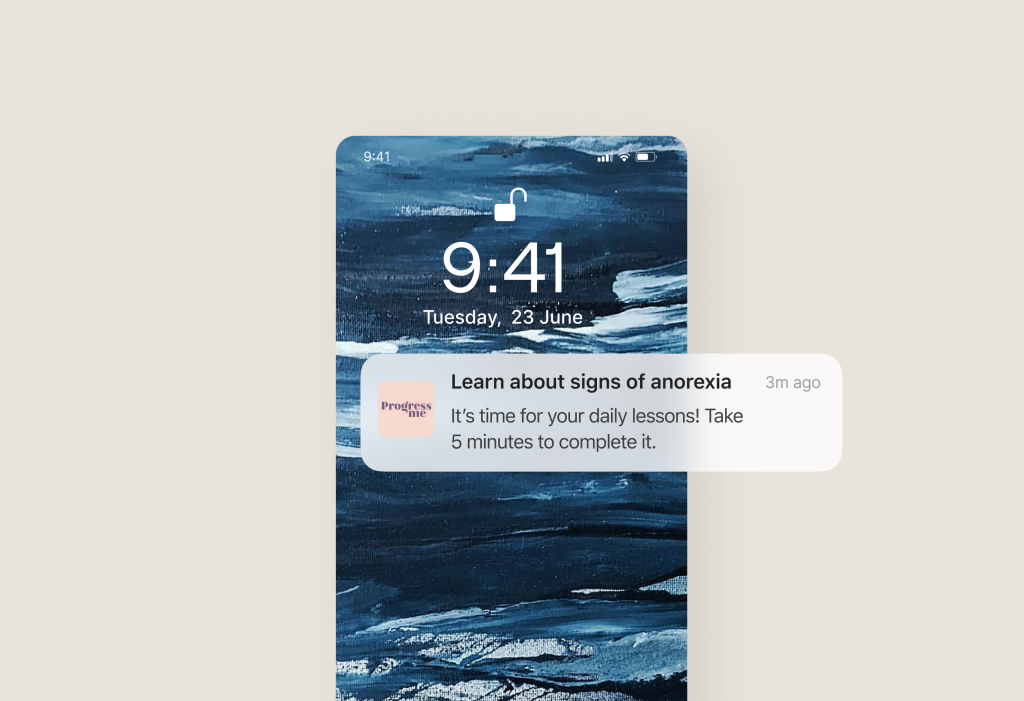
V. And a bonus patient engagement strategy: ending of relationships
This point of patient engagement strategies in healthcare is applicable only to solutions that involve post-treatment/post-operative care. Just because a patient has completed their primary treatment doesn’t mean they are fully healed physically or emotionally.
Post-operative care is an integral part of any patient’s treatment plan, but unfortunately, there are cases where over 40% of patients misunderstand, ignore, or prefer not to follow post-care instructions.
When post-care instructions are complex or require significant lifestyle changes, non-compliance can reach up to 70%.
How can we assist patients in such cases? By utilizing the practices mentioned in the previous point: we can motivate users through community engagement, gamification, and content. The form remains the same, but the content changes.

We hope this article was useful for you!
Who we are? We are a digital health product studio, who transforms healthcare digital experiences and sets new standards for delivering digital healthcare in a way that positively impacts people’s lives.
We assist healthcare startups in designing and developing digital products, while also helping healthcare organizations undergo transformative changes.
If you are interested about our experience check our portfolio with case studies by the link or you can read more about us here.
And write to us now on m@nozomihealth.com and we will discuss how we can help ensure that your product brings real benefits







